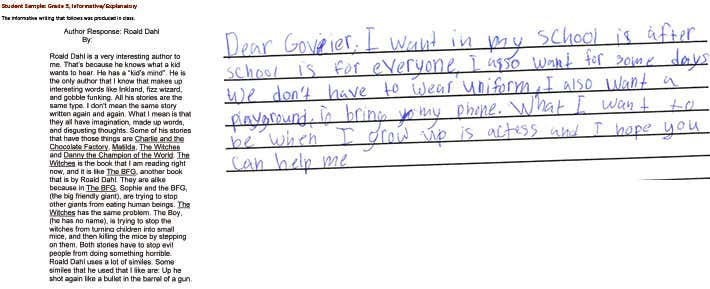California

When it comes to literacy and basic education, California is bringing down the nation. On measures of basic education in the 200 largest school districts in the country, California has 11 of the lowest performing 26 districts, including three among the lowest-performing 10 districts. Students in these California school districts are far behind their actual grade in reading proficiency.
Ranking of lowest 26 districts among 200 largest school districts in the United States, from lowest to highest average composite test score:
- Rochester City School District, New York
- Detroit City School District, Michigan
- Stockton Unified School District, California
- Memphis City School District, Tennessee
- St. Louis City School District, Missouri
- Cleveland Municipal School District, Ohio
- Milwaukee School District, Wisconsin
- Buffalo City School District, New York
- Bakersfield City Elementary School District, California
- San Bernardino City Unified School District, California
- Columbus City School District, Ohio
- Fresno Unified School District, California
- Oklahoma City Public Schools, Oklahoma
- Moreno Valley Unified School District, California
- Montgomery County School District, Alabama
- Richmond County School District, Georgia
- Baltimore City Public Schools, Maryland
- Tulsa Public Schools, Oklahoma
- East Baton Rouge Parish School District, Louisiana
- Santa Ana Unified School District, California
- Fontana Unified School District, California
- Los Angeles Unified School District, California
- Anaheim Elementary School District, California
- San Antonio Independent School District, Texas
- Oakland Unified School District, California
- Ontario-Montclair Elementary School District, California
The situation is even more dire for children in Plaintiffs’ schools, which are three of the lowest performing in California: La Salle Avenue Elementary School in the Los Angeles Unified School District, Van Buren Elementary School in the Stockton Unified School District, and Children of Promise Preparatory Academy, a charter school in the Inglewood Unified School District.
Performance Data
Achievement data shows that students at Plaintiffs’ schools have rock-bottom proficiency scores. At La Salle, for example, only 3% of all students scored at or above “met standard” on the state standardized test, the California Assessment of Student Performance and Progress (CAASPP), in English Language Arts (ELA) in 2014-15. That figure decreased to 2% in 2015-16 and barely increased to 4% in 2016-17. To put the 2016-17 figure in context, of the 179 La Salle students who took the CAASPP exam, only eight children were proficient or above. A single child in the school—one third-grader—exceeded the state’s standards, and only two third-graders, three fourth-graders, and three fifth-graders met the state’s standards.
At Van Buren, the percentage of students meeting state standards has decreased each year since the CAASPP was first administered, and in fact has almost been cut in half, falling from 11% in 2014-15 to 8% in 2015-16, and further down to 6% in 2016-17. This means that in 2017, of the 378 students who took the CAASPP, only 24 children met state standards, including a single child in fourth grade, two sixth-graders, and four children each in third, fifth, and seventh grades.
Children at charter schools are also being denied access to literacy. For example, at Children of Promise, in 2014-15, only 15% of all students scored at or above “met standard” on the ELA CAASPP, and even fewer students met the standard in subsequent years. That figure decreased to 11% in 2015-16 and did not rise in 2016-17. In 2016-17, not a single child in the fifth grade met the standard, only three sixth graders met the standard, and no more than five children in any other grade met the standard.
See more in our detailed performance data charts.
Student Work
The state has established statewide academic content standards by adopting the California Common Core State Standards in English Language Arts and Literacy in History/Social Studies, Science, and Technical Subjects. [1] According to the state’s own standards, students in second grade should be able to “introduce a topic,” “use facts and definitions to develop points,” and “use linking words (e.g., because, and, also).” However, at La Salle, second grade students have not mastered basic spelling and can barely write a complete sentence.

Students in the fifth grade should be able to “introduce a topic or text clearly, state an opinion, and create an organizational structure in which ideas are logically grouped to support the writer’s purpose,” “provide logically ordered reasons that are supported by facts and details,” “link opinion and reasons using words, phrases, and clauses (e.g., consequently, specifically),” “form and use the perfect (e.g., I had walked),” and “use punctuation to separate items in a list.” Yet, at Children of Promise, students struggle to form complete sentences with correct use of verb tense or punctuation, much less demonstrate clear reasoning or a coherent organizational structure.

[1] California Department of Education, California Common Core State Standards: English Language Arts & Literacy in History/Social Studies, Science, and Technical Subjects,